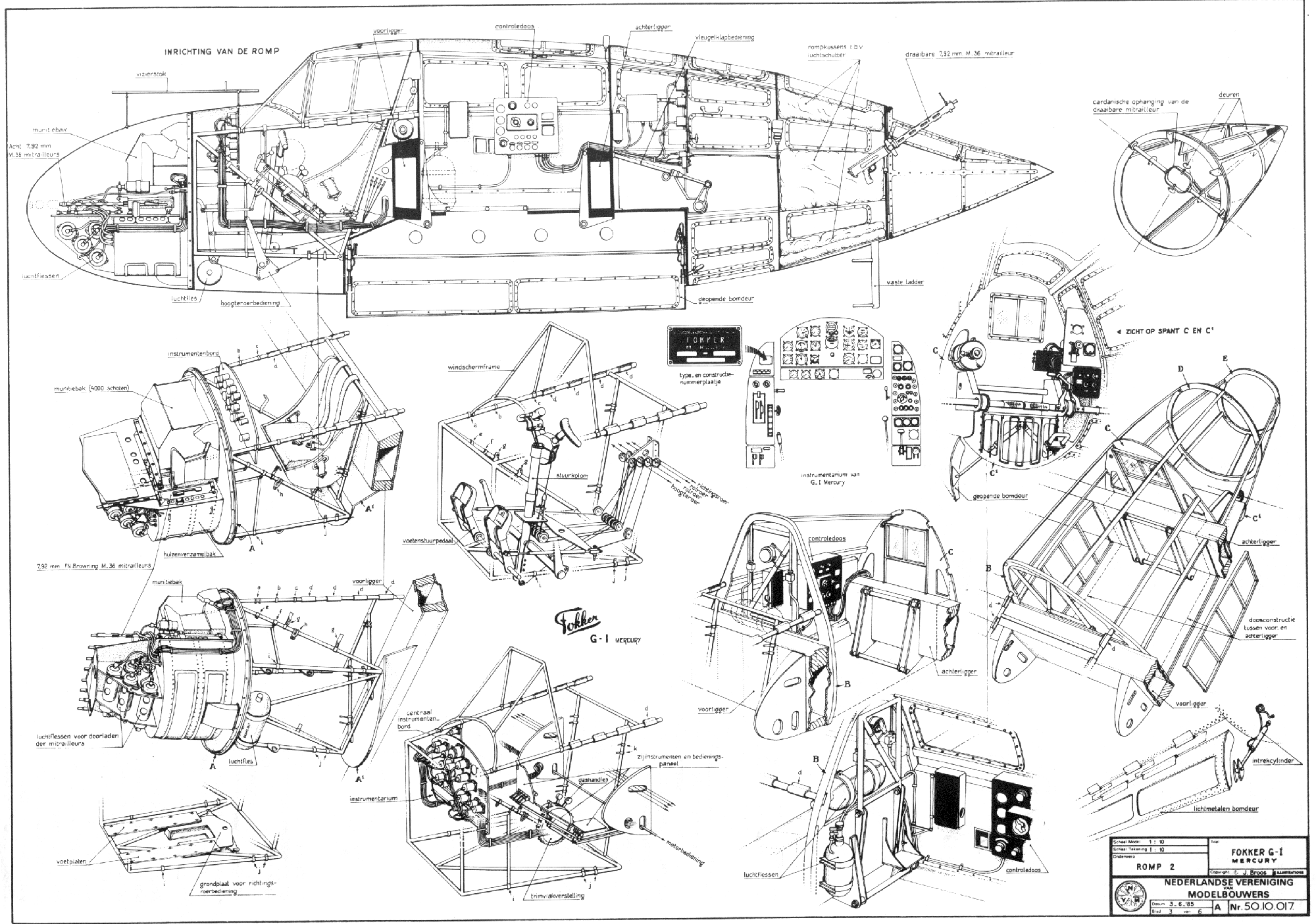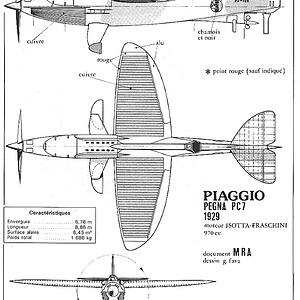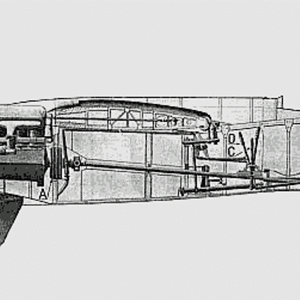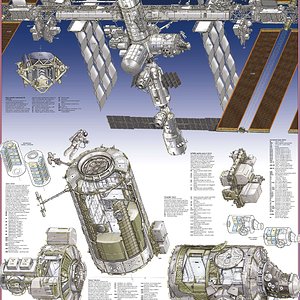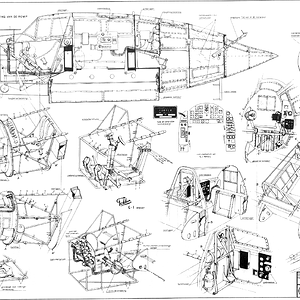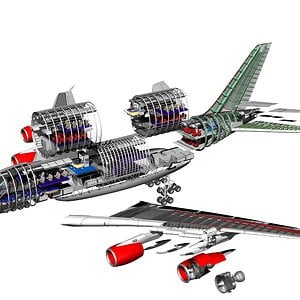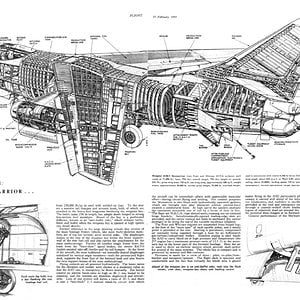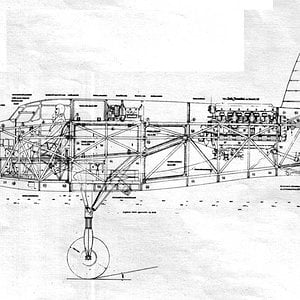Navigation
Install the app
How to install the app on iOS
Follow along with the video below to see how to install our site as a web app on your home screen.
Note: This feature may not be available in some browsers.
More options
You are using an out of date browser. It may not display this or other websites correctly.
You should upgrade or use an alternative browser.
You should upgrade or use an alternative browser.
esign and development
The G.I, given the nickname le Faucheur ("reaper" in French), was designed as a private venture in 1936 by Fokker chief engineer Dr. Schatzki. Intended for the role of jachtkruiser, "heavy" fighter or air cruiser, able to gain air superiority over the battlefield as well as being a bomber destroyer, the G.1 would fulfill a role seen as important at the time, by advocates of Giulio Douhet's theories on air power. The Fokker G.I utilized a twin-engined, twin-boom layout that featured a central nacelle housing two or three crew members (a pilot, radio operator/navigator/rear gunner or a bombardier) as well as a formidable armament of twin 23 mm (.91 in) Madsen cannon and a pair of 7.9 mm (.31 in) machine guns (later eight machine guns) in the nose and one in a rear turret.[2]
Besides its main mission, the G.1 could be configured for ground attack and light bombing missions (it could carry a bomb load of one 400 kg/882 lb bomb or combinations of two 200 kg/441 lb or 10 26 kg/57 lb bombs).[2]
The design and construction of the prototype (registered as X-2) was completed in just seven months. At its introduction at the Paris Air Show in November 1936, even before its first flight, the G.I was a sensation, appearing in a purple and yellow finish (evocative of the Spanish Republican colors, thought to be Fokker's first export customer).[2]
Like all Fokker aircraft of the period, the G.I was of mixed construction; the front of the central pod and the tail booms were built around a welded frame, covered with aluminium plating. The back of the central pod, however, as well as the wings, had a wooden frame, covered with triplex, a technique also used in Fokker's successful passenger aircraft at that time.[3]
The G.I prototype, powered by 485 kW (650 hp) Hispano-Suiza 14AB-02/03 engines, had its first flight at Welschap Airfield, near Eindhoven on 16 March 1937 with Karel Toman-Mares at the controls.[4] Later, Emil Meinecke took over much of the test flights.[5] The maiden flight went well, but a subsequent test flight in September 1937 ended with a supercharger explosion that nearly caused the loss of the prototype.[5] The accident prompted a replacement of the Hispano-Suiza engines with 559 kW (750 hp) Pratt & Whitney SB4-G Twin Wasp Junior engines.
[edit]Operational history
Replica of the G.I at the Dutch Air Force Museum in Soesterberg, The Netherlands.
During testing, the company received a contract from the Spanish Republican government for 26 G.1 "export" versions with Pratt & Whitney engines. Despite receiving payment, the order was destined never to be fulfilled as the Dutch government placed an embargo on the sale of military equipment to Spain.[5] Fokker however continued building the aircraft and a story was released to the press that they were intended for Finland, hence the persistent tales about a "Finnish" order.[6]
Besides the Dutch Luchtvaartafdeeling, several foreign air forces showed an interest in the G.I. as either a fighter or dive-bomber. In order to test its potential as a dive-bomber, the G.1 prototype was fitted with hydraulically-operated dive brakes under the wings. Flight tests revealed that the G.1 was capable of diving at over 644 km/h (400 mph) and demonstrated aerobatic capabilities. Swedish Air Force officer Captain Björn Bjuggren tested the G.1 in over 20 dives and reported favourably on its effectiveness as a dive bomber.[7] Orders for G.1b Wasp aircraft came from Spain (26 ordered) and Sweden (18), while the Mercury variant was ordered by Denmark (12) and Sweden (72). Although Belgium, Turkey, Hungary and Switzerland air forces showed great interest, they never placed firm orders.
The Luchtvaartafdeeling ordered 36 G.Ias with 541 kW (725 hp) Bristol Mercury VIII engines, the standard engine used by the Dutch Air Force in the Fokker D.XXI fighter, in order to equip two squadrons.[5] Only the first four examples were built as three-seaters intended for ground-attack, with the remainder being completed as two-seat fighters. During the lead-up to hostilities, a total of 26 G.Ias were operational in the 3rd Jachtvliegtuigafdeling (JaVA) at Rotterdam (Waalhaven Airfield),[8] and 4th JaVA Fighter Group at Bergen near Alkmaar.[9] The aircraft were actively involved in border patrols and in order to ensure neutrality, on 20 March 1940, a G.1a from 4th JaVA forced down an Armstrong Whitworth Whitley from the RAF's 77 sqn when it strayed into Dutch air space
General characteristics
Crew: 2-3
Length: 10.87 m (35 ft 8 in)
Wingspan: 17.16 m (56.29 ft)
Height: 3.80 m (12.4 ft)
Wing area: 38.30 m² (412.26 ft²)
Empty weight: 3,325 kg (7,330 lb)
Loaded weight: 4,800 kg (10,582 lb)
Max. takeoff weight: 5,000 kg (11,023 lb)
Powerplant: 2 × Bristol Mercury VIII nine-cylinder air-cooled single-row piston radial engine, 730 hp at 2,650 rpm for takeoff, 830 hp (618 kW) at 4,100m at 2,750rpm maximum continuous power (545 kW) each
Performance
Maximum speed: 475 km/h at 4,100m (295 mph)
Range: 1,510 km (938 mi)
Service ceiling: 10,000 m (32,808 ft)
Rate of climb: 13.5 m/s (44.29 ft/s)
Wing loading: 125.3 kg/m² (25.68 lb/ft²)
Power/mass: 0.22 kW/kg (0.14 hp/lb; 0.30 hp/kg)
Time to altitude: 6.0 min 20 sec to 5,000 m (16,405 ft)
Armament
8× 7.9 mm (0.31 in) forward-firing FN-Browning machine guns in the nose
1× 7.9 mm (0.31 in) machine gun in rear turret
300 kg (660 lb) of bombs (G.1b could take 400 kg (880 lb))
The G.I, given the nickname le Faucheur ("reaper" in French), was designed as a private venture in 1936 by Fokker chief engineer Dr. Schatzki. Intended for the role of jachtkruiser, "heavy" fighter or air cruiser, able to gain air superiority over the battlefield as well as being a bomber destroyer, the G.1 would fulfill a role seen as important at the time, by advocates of Giulio Douhet's theories on air power. The Fokker G.I utilized a twin-engined, twin-boom layout that featured a central nacelle housing two or three crew members (a pilot, radio operator/navigator/rear gunner or a bombardier) as well as a formidable armament of twin 23 mm (.91 in) Madsen cannon and a pair of 7.9 mm (.31 in) machine guns (later eight machine guns) in the nose and one in a rear turret.[2]
Besides its main mission, the G.1 could be configured for ground attack and light bombing missions (it could carry a bomb load of one 400 kg/882 lb bomb or combinations of two 200 kg/441 lb or 10 26 kg/57 lb bombs).[2]
The design and construction of the prototype (registered as X-2) was completed in just seven months. At its introduction at the Paris Air Show in November 1936, even before its first flight, the G.I was a sensation, appearing in a purple and yellow finish (evocative of the Spanish Republican colors, thought to be Fokker's first export customer).[2]
Like all Fokker aircraft of the period, the G.I was of mixed construction; the front of the central pod and the tail booms were built around a welded frame, covered with aluminium plating. The back of the central pod, however, as well as the wings, had a wooden frame, covered with triplex, a technique also used in Fokker's successful passenger aircraft at that time.[3]
The G.I prototype, powered by 485 kW (650 hp) Hispano-Suiza 14AB-02/03 engines, had its first flight at Welschap Airfield, near Eindhoven on 16 March 1937 with Karel Toman-Mares at the controls.[4] Later, Emil Meinecke took over much of the test flights.[5] The maiden flight went well, but a subsequent test flight in September 1937 ended with a supercharger explosion that nearly caused the loss of the prototype.[5] The accident prompted a replacement of the Hispano-Suiza engines with 559 kW (750 hp) Pratt & Whitney SB4-G Twin Wasp Junior engines.
[edit]Operational history
Replica of the G.I at the Dutch Air Force Museum in Soesterberg, The Netherlands.
During testing, the company received a contract from the Spanish Republican government for 26 G.1 "export" versions with Pratt & Whitney engines. Despite receiving payment, the order was destined never to be fulfilled as the Dutch government placed an embargo on the sale of military equipment to Spain.[5] Fokker however continued building the aircraft and a story was released to the press that they were intended for Finland, hence the persistent tales about a "Finnish" order.[6]
Besides the Dutch Luchtvaartafdeeling, several foreign air forces showed an interest in the G.I. as either a fighter or dive-bomber. In order to test its potential as a dive-bomber, the G.1 prototype was fitted with hydraulically-operated dive brakes under the wings. Flight tests revealed that the G.1 was capable of diving at over 644 km/h (400 mph) and demonstrated aerobatic capabilities. Swedish Air Force officer Captain Björn Bjuggren tested the G.1 in over 20 dives and reported favourably on its effectiveness as a dive bomber.[7] Orders for G.1b Wasp aircraft came from Spain (26 ordered) and Sweden (18), while the Mercury variant was ordered by Denmark (12) and Sweden (72). Although Belgium, Turkey, Hungary and Switzerland air forces showed great interest, they never placed firm orders.
The Luchtvaartafdeeling ordered 36 G.Ias with 541 kW (725 hp) Bristol Mercury VIII engines, the standard engine used by the Dutch Air Force in the Fokker D.XXI fighter, in order to equip two squadrons.[5] Only the first four examples were built as three-seaters intended for ground-attack, with the remainder being completed as two-seat fighters. During the lead-up to hostilities, a total of 26 G.Ias were operational in the 3rd Jachtvliegtuigafdeling (JaVA) at Rotterdam (Waalhaven Airfield),[8] and 4th JaVA Fighter Group at Bergen near Alkmaar.[9] The aircraft were actively involved in border patrols and in order to ensure neutrality, on 20 March 1940, a G.1a from 4th JaVA forced down an Armstrong Whitworth Whitley from the RAF's 77 sqn when it strayed into Dutch air space
General characteristics
Crew: 2-3
Length: 10.87 m (35 ft 8 in)
Wingspan: 17.16 m (56.29 ft)
Height: 3.80 m (12.4 ft)
Wing area: 38.30 m² (412.26 ft²)
Empty weight: 3,325 kg (7,330 lb)
Loaded weight: 4,800 kg (10,582 lb)
Max. takeoff weight: 5,000 kg (11,023 lb)
Powerplant: 2 × Bristol Mercury VIII nine-cylinder air-cooled single-row piston radial engine, 730 hp at 2,650 rpm for takeoff, 830 hp (618 kW) at 4,100m at 2,750rpm maximum continuous power (545 kW) each
Performance
Maximum speed: 475 km/h at 4,100m (295 mph)
Range: 1,510 km (938 mi)
Service ceiling: 10,000 m (32,808 ft)
Rate of climb: 13.5 m/s (44.29 ft/s)
Wing loading: 125.3 kg/m² (25.68 lb/ft²)
Power/mass: 0.22 kW/kg (0.14 hp/lb; 0.30 hp/kg)
Time to altitude: 6.0 min 20 sec to 5,000 m (16,405 ft)
Armament
8× 7.9 mm (0.31 in) forward-firing FN-Browning machine guns in the nose
1× 7.9 mm (0.31 in) machine gun in rear turret
300 kg (660 lb) of bombs (G.1b could take 400 kg (880 lb))

